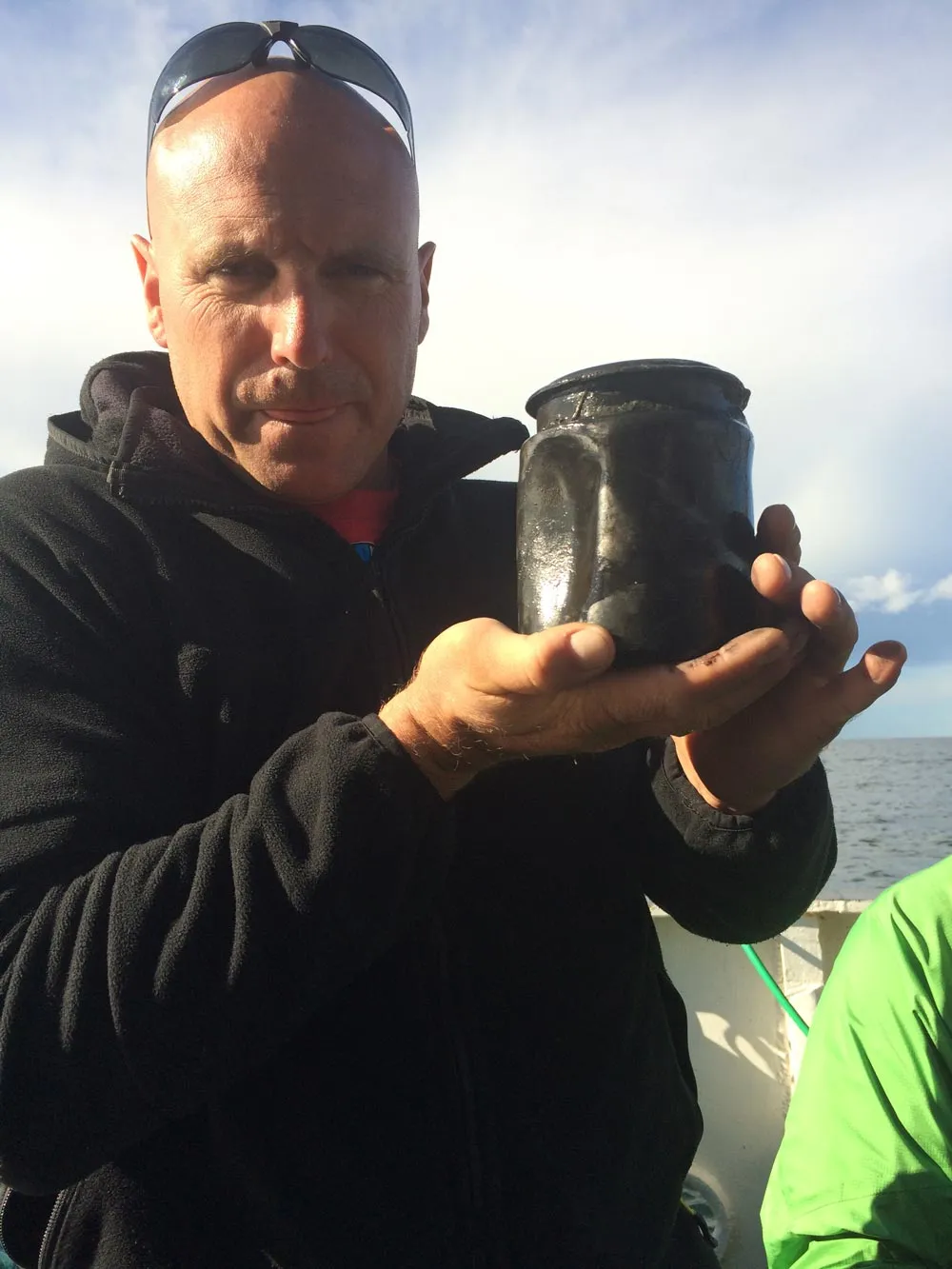Gouda Find: Divers Discover 340-Year-Old Dairy Product in Shipwreck
One researcher compared the scent to a mixture of yeast and a type of unpasteurized cheese called Roquefort
:focal(1569x2580:1570x2581)/https://tf-cmsv2-smithsonianmag-media.s3.amazonaws.com/filer/df/be/dfbed0a7-bdf3-4ad2-a726-0541f28a46d6/image2.jpg)
Since divers discovered the remains of the historic shipwreck of the Swedish royal vessel Kronan in 1980, the ship has been a veritable treasure trove of archaeological finds. From gold coins and pharmaceuticals to brain tissue belonging to members of the ship’s doomed crew, underwater archaeologists have found some stunning stuff in the shipwreck. But recently, divers announced that they may have made their stinkiest discovery yet: a hunk of what they believe is 340-year-old cheese.
"It's a pretty good guess that it's some kind of dairy product, and we think it is cheese," Kalmar County Museum researcher Lars Einarsson tells Emma Löfgren for The Local.
The Kronan has sat at the bottom of the Baltic Sea off of Sweden’s southeast coast since 1676, when the warship was sunk during a battle against Denmark and the Netherlands. In the decades since the ship was rediscovered, archaeologists have uncovered tens of thousands of 17th-century artifacts, and to this day, continue to dig up new tidbits. Einarsson and his colleagues were diving through the wreckage earlier this month on an excavation trip when they stumbled across a black tin jar buried in clay on the seafloor, Sarah Laskow writes for Atlas Obscura. When they brought it back to the surface, the change in pressure caused some of its contents leak out through the lid.
“That’s when the smell hit us,” Einarsson tells Matias Rankinen for Kvällsposten. “I certainly don’t recommend tasting it. It’s a mass of bacteria.”

Einarsson compared its scent to a mixture of yeast and a type of unpasteurized cheese called Roquefort, Jon Henley writes for The Guardian. Although it is remarkable that the jar preserved the gooey stuff inside for so long, Einarsson says he certainly wouldn’t consider sneaking a taste.
“It's been in the mud, so it's reasonably well preserved, but at the same time it has been at the bottom of the sea for 340 years—we're not talking Tutankhamun's burial chamber," Einarsson tells Löfgren.
Einarsson might have his misgivings about tasting this cheese, but occasionally others have been a bit braver when they come across food findings. In 2014, an Irish chef sampled a taste of an ancient lump of “bog butter” found preserved in peat for thousands of years, and just last year a group of polar scientists working in northern Greenland came across a still-edible cache of military rations from an expedition 60 years earlier. Meanwhile, the cheese from the Kronan is being kept at low temperatures to keep it from rapidly decaying while researchers study it to see what it was made from and what the 17th century sailors aboard the ship may have eaten.
"I think it smells quite nice, because I like exotic food,” Einarsson tells Löfgren. “But I would not want to taste it."